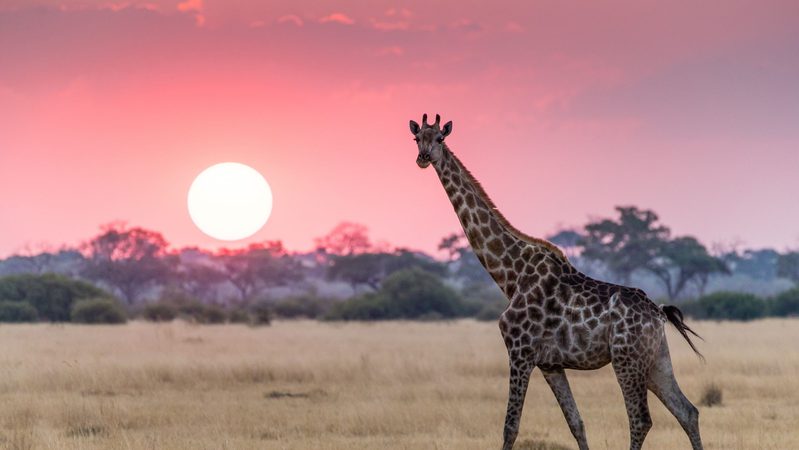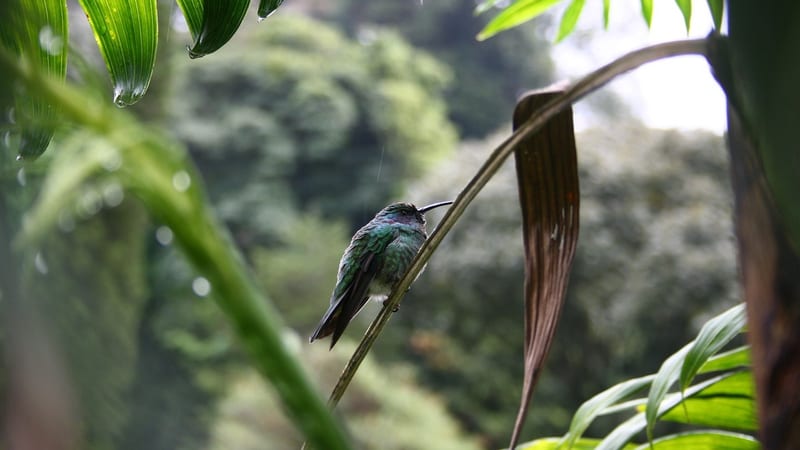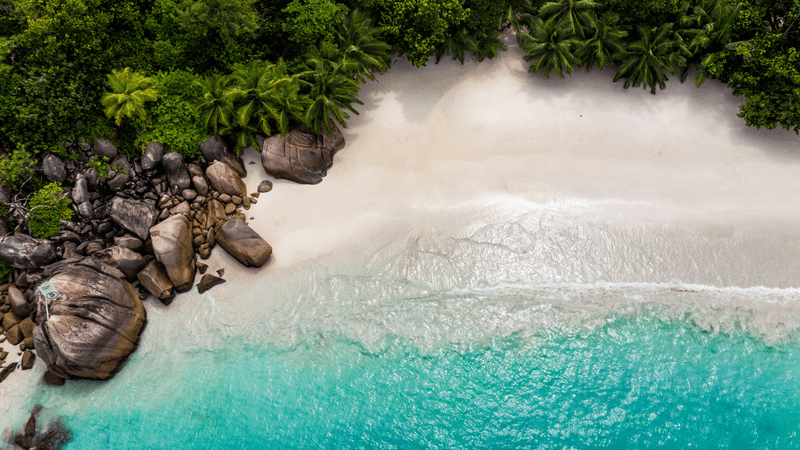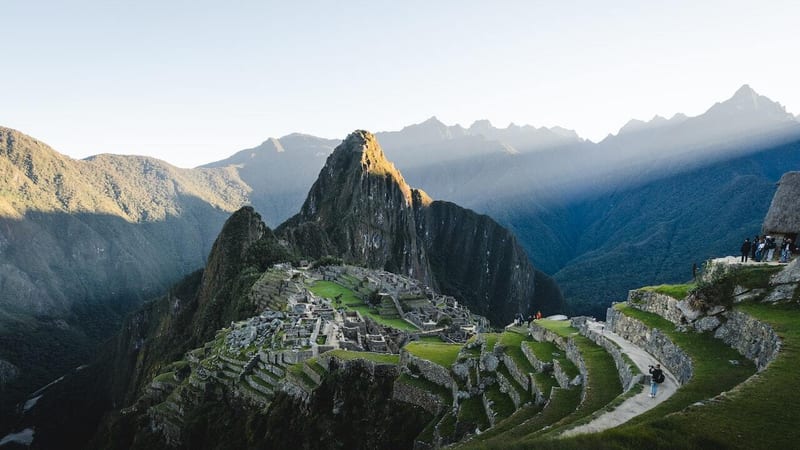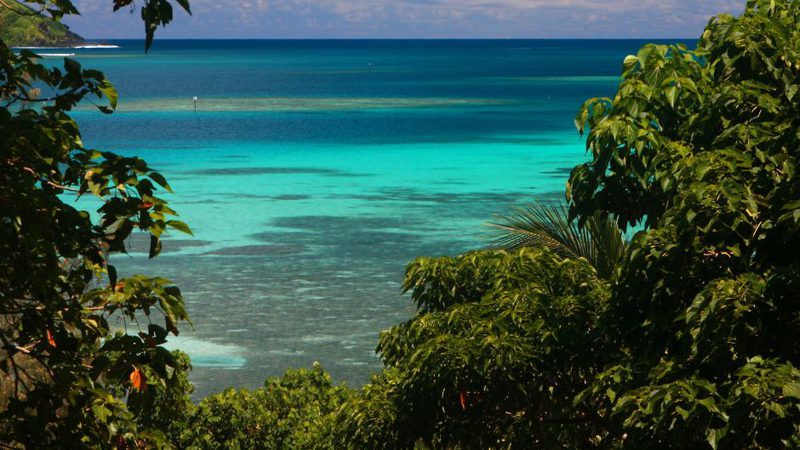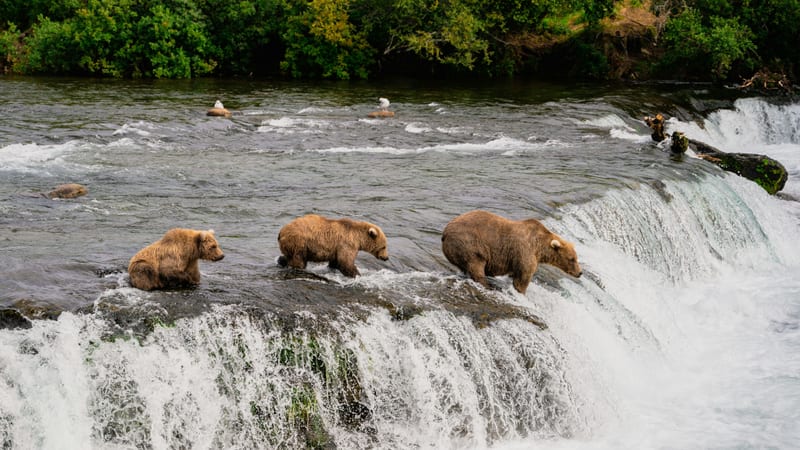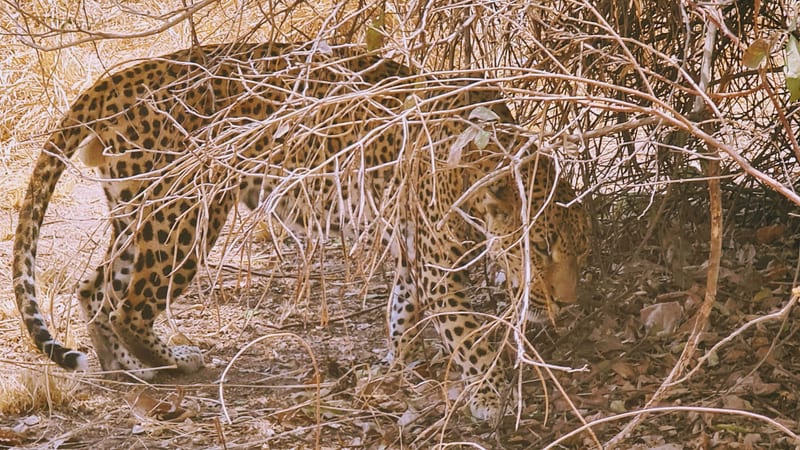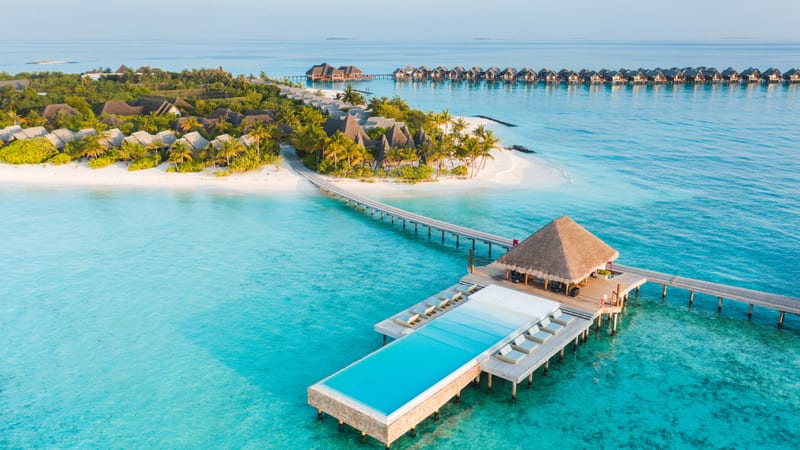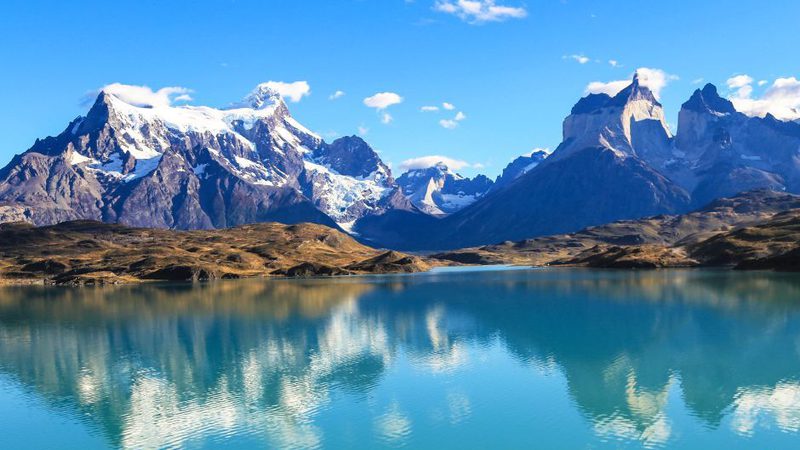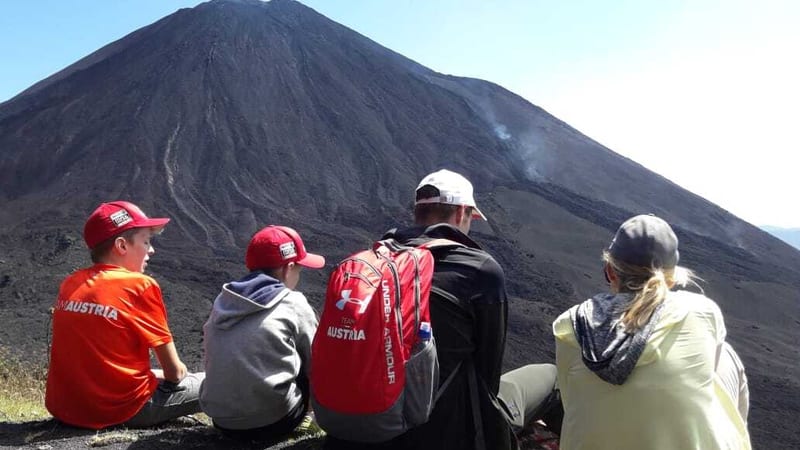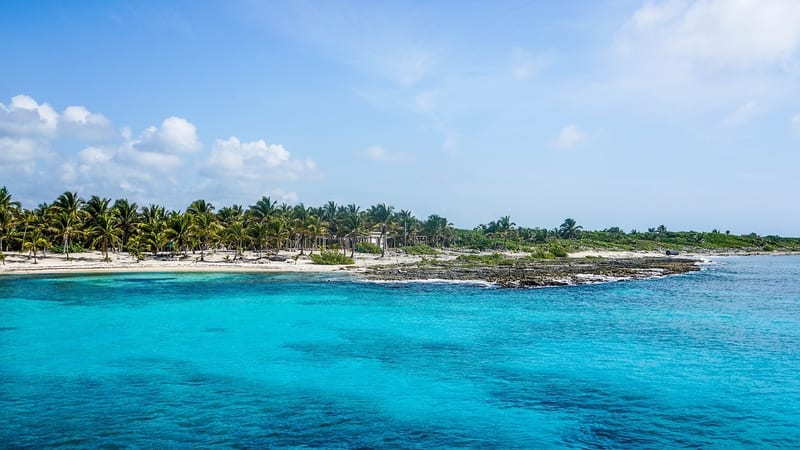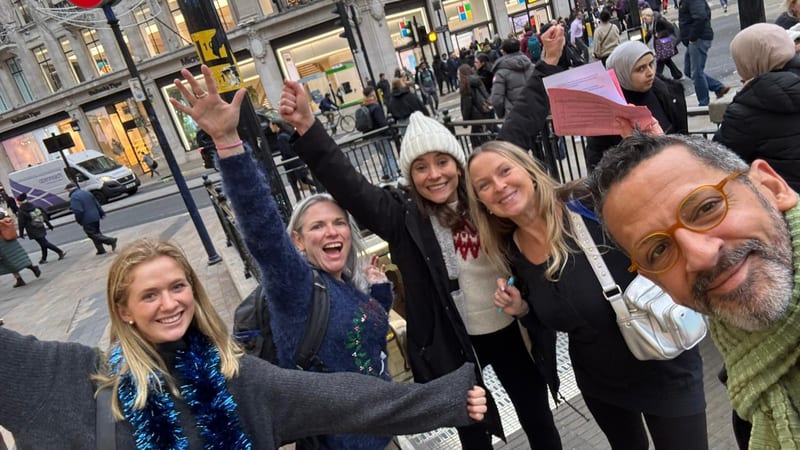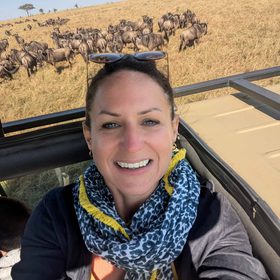Tumaren camp offers a permanent base from which to explore on a camel safari
Location: Tumaren Camp lies in the heart of northern Kenya's Laikipia region, on a private conservation area just outside the town of Nanyuki. This is Samburu country - rugged, wild, and extraordinary beautiful, with wide open plains, rocky outcrops, and acacia-studded hills stretching into the distance. The camp is run by the team behind Karisia Walking Safaris, and it's designed to immerse you fully in this alndscape, far from crowds or other camps. If you're looking for a true off-the-beaten-track experience that's rich in both nature and culture, Tumaren is exactly that - untamed, peaceful, and deeply connected to the land.
Rooms: Accommodation at Tumaren is in large, walk-in safari tents with a classic East African feel. The tents are spacious and comfortable, with big beds, solar lighting, and shaded verandas looking out over the bush. En-suite bathrooms are open-air but private, with bucket showers and eco0flush loos - simply, but thoughtfully done. The whole setup feels wild yet welcoming. The camp is small and intimate, creating a sense of personal space and deep connection with nature.
Amenities: This isn't a luxury lodge in the traditional sense, but what Tumaren offers is a king of luxury that's hard to come by - space, silence, and authenticity. The central mess tent is beautifully styled, with books, maps, and locally made furniture, and there's a campfire lit each evening for sundowners under the stars. Meals are wholesome and generous, cooked over open flames and served with care, and there's always a friendly, relaxed atmosphere around camp. Service is excellent, with a small team who make you feel part of it.
Activities: Tumaren is the base for Karisia's renowned walking safaris, but it also works brilliantly as a standalone camp for guests wanting a slower, more immersive stay. You can head out on guided walks with expert Samburu trackers, take game drive through the conservancy, or spend time learning about the flora, fauna, and culture of the region. Wildlife here includes Grevy's zebra, reticulated giraffe, gerenuk, leopard, hyena, and more - often seen without another vehicle in sight. Camel-supported treks are a highlight too, offering the chance to explore remote valleys and high ridges in a way that feels timeless and deeply rooted in the land.
Sustainability: Tumaren and Karisia Walking Safaris are built on strong conservation and community principles. Th eland is leased from local Samburu families, and the camp's operations directly support wildlife protection and traditional livelihoods. Staff are local, trained in-house, and proud to share their knowledge and heritage. The camp runs entirely off-grid, using solar power and natural materials, and practices leave-no-trave principles in everything it does. Staying here is a rare chance to experience a truly low-impact safari that gives back meaningfully to both the people and the landscape that make this place so special.
Best places to stay in Laikipia
Laikipia Trip Inspiration
When to visit Kenya
Find out the best time to visit Kenya with our month by month guide.
- Best
- Good
- Mixed
- Jan
- Feb
- Mar
- Apr
- May
- Jun
- Jul
- Aug
- Sep
- Oct
- Nov
- Dec
January
January is a great time for wildlife viewing. The landscapes are lush and green after the 'short rains' and newborn animals can been seen. It is hot, but brief afternoon or evening showers cool things down, without compromising your safari. Over on the coast the sea is clear, making it ideal for diving and snorkelling, and the days are warm and bright.
February
February is an ideal time to visit Kenya, and great for game viewing. The landscapes are green and thriving thanks to the short rains, and newborn animals will be hopping around the plains. There maybe a few afternoon showers which are welcome in the heat, and don't impact on wildlife viewing. Water clarify is excellent at the moment, which is good news for watersports enthusiasts. And if you want to spot a whale shark, now is the time to try.
March
Still a good option for wildlife viewing and diving, although with the 'long rains' just around the corner, expect wetter and hotter weather.
April
April brings the start of the 'long rains' which means game reserves and national parks become muddy and harder to drive around. Over on the coast it's hot and wet, so it isn't the best time of year to travel. Some camps and lodges close during this period.
May
The 'long rains' continue into May, making park tracks difficult to navigate in the mud, and the coast very warm and wet. There will be less accommodation choice at this time as several lodges and camps during this period.
June
June is a beautiful time of year to visit Kenya, with the rains receding to just light showers, and the long dry season not far ahead. The high grasses can sometimes make it more of a challenge to spot game, but the landscapes are lush and some animals may begin arriving early for the migration. At altitude nights can be cool, but elsewhere the temperature is pleasant.
July
July marks the beginning of the great migration into the Masai Mara, and with warm and generally dry weather, this is a great time of year to visit. Days are sunny, skies are blue and there isn't too much dust around, so it's a great time for photography.
August
The migration is now in full swing in the Masai Mara, with lots of river crossing action, so if you want to see those massive herds of wildebeest and zebra, now is the time to come. Game viewing in general is excellent and it's one of the most popular times of year to visit, so some of the main parks do become crowded. Temperatures are warm and dry.
September
Game viewing continues to be excellent, and the weather is generally dry so this is another ideal month to visit Kenya's parks. The bush is less dense and as animals gather around waterholes and rivers it makes wildlife spotting much easier.
October
October is a great time if you want to avoid the crowds and don't mind the temperature slowly starting to rise. There may be a few short showers, but game viewing remains excellent with the end of the migration, and it's a good time to holiday anywhere in Kenya.
November
November heralds the start of the 'short rains' and with hotter temperatures some camps are closed. The Mara however is still open, and despite sometimes stormy skies, game viewing is still good. Fewer crowds and lower prices make this an attractive month to visit. Over on the coast water clarify is good for snorkelling and diving.
December
The 'short rains' are bringing the landscapes back to life, and as the plains start to become green again, wildlife viewing remains good, and it's a great time for birding. Some camps are closed (mainly in the north of Kenya) but many others remain open. The showers tend to fall in the afternoons and don't impact greatly on a safari. Take advantage of reduced visitor numbers and lower prices.
Speak to a Kenya expert today
and start planning your tailor-made vacation

Alistair

Ottilie


